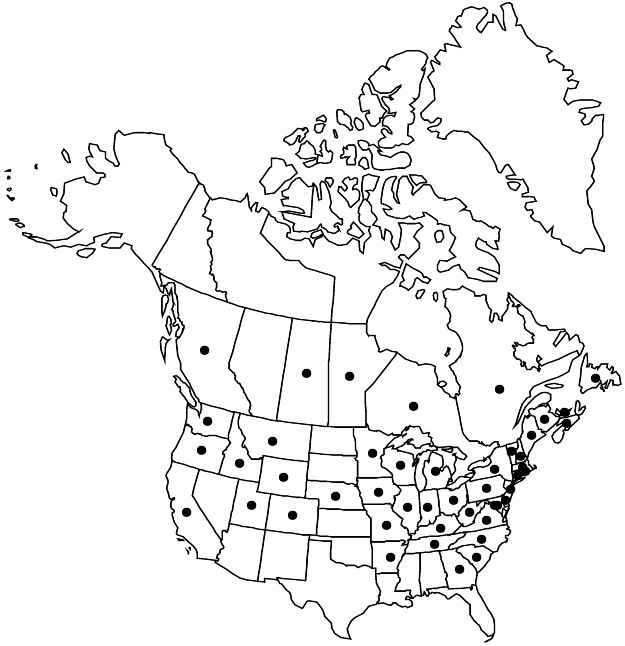Euphorbia cyparissias
Sp. Pl. 1: 461. 1753.
Herbs, perennial, with slender, spreading rootstock. Stems erect or ascending, unbranched or branched, often with short axillary vegetative shoots with very narrow leaves, 10–50 cm, glabrous. Leaves: petiole absent; blade linear to linear-ovate or linear-oblanceolate, 5–30 × 0.5–3 mm, base rounded to cuneate, margins entire, apex rounded to acute, surfaces glabrous; venation inconspicuous, only midvein prominent. Cyathial arrangement: terminal pleiochasial branches 6–25, each 1–2-times 2-branched; pleiochasial bracts similar in shape to distal leaves except shorter and wider; dichasial bracts distinct, widely ovate, rhombic or reniform, base obtuse to truncate, margins entire, apex acute or obtuse, sometimes mucronulate; axillary cymose branches 0–15. Cyathia: peduncle 0–0.5 mm. Involucre campanulate to slightly urceolate, 1.5–2 × 0.9–1.1 mm, glabrous; glands 4, crescent-shaped; 0.4–0.6 × 0.7–1.3 mm; horns convergent, 0.1–0.5 mm. Staminate flowers 15–25. Pistillate flowers: ovary glabrous; styles 1–1.2 mm, 2-fid. Capsules subglobose, 2.5–3 × 3–4 mm, slightly lobed; cocci rounded, granulate, glabrous; columella 1.9–2.1 mm. Seeds blackish, ovoid-oblong, 1.8–2.5 × 1.4–1.7 mm, smooth; caruncle nipple-shaped or subreniform, 0.2–0.4 × 0.7–1.1 mm.
Phenology: Flowering and fruiting spring–fall.
Habitat: Fields, roadsides, waste places.
Elevation: 0–1500 m.
Distribution

B.C., Man., N.B., Nfld. and Labr. (Nfld.), N.S., Ont., P.E.I., Que., Sask., Ark., Calif., Colo., Conn., Del., D.C., Ga., Idaho, Ill., Ind., Iowa, Ky., Maine, Md., Mass., Mich., Minn., Mo., Mont., Nebr., N.H., N.J., N.Y., N.C., Ohio, Oreg., Pa., R.I., S.C., Tenn., Utah, Vt., Va., Wash., W.Va., Wis., Wyo., Europe.
Discussion
Selected References
None.